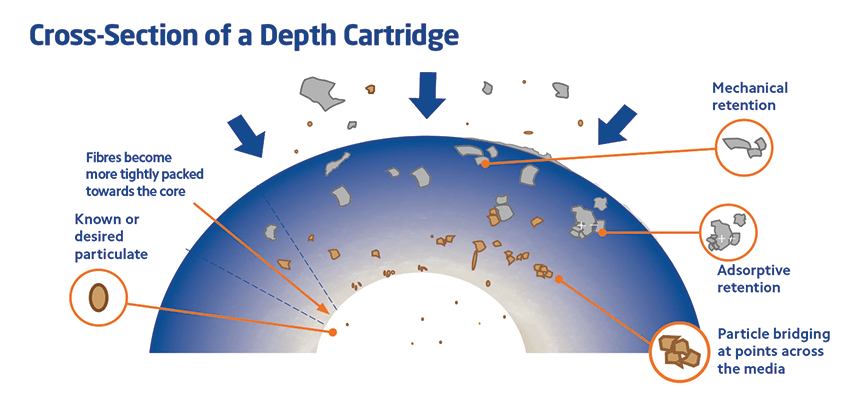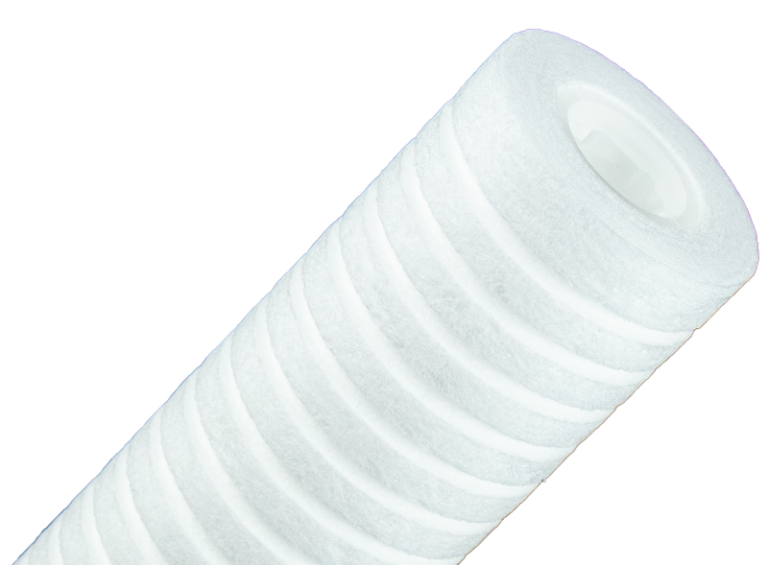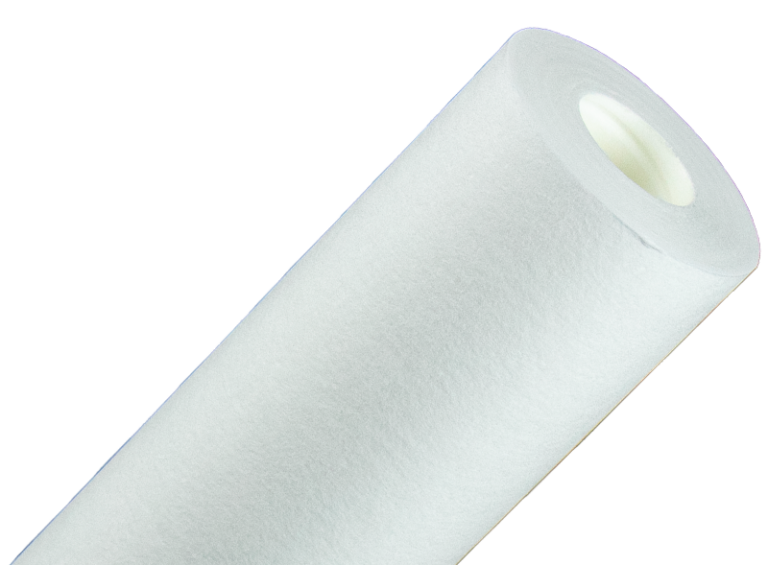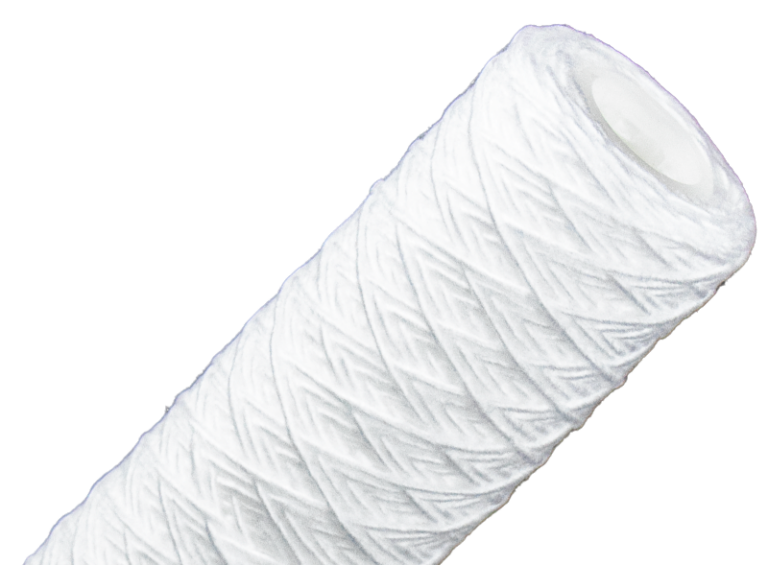How do depth filters work?
Depth filters are constructed to create a porous media that catches unwanted particles throughout the medium itself, rather than just on its surface. They are typically used in instances when the water has a heavy degree of particles. Unlike some other filtration technologies, depth filters can catch and hold a large volume of particles before they become clogged.
At the first stage of the process, large particulate matter is captured as the water travels through the cartridge media, seeking to find the path of least resistance. At the same time, it is forced to travel in a twisting and turning motion to ensure that the maximum volume of particles is captured by the packed fibres. This sieving mechanism is called mechanical retention, and as a result, the fibres become increasingly packed and are able pick up smaller particles.

On the exterior of the cartridge, the outer media is designed to catch the bigger particles and the inner, more tightly packed media, is positioned to grab increasingly smaller particles. This approach ensures that particulate is captured across every element of the depth media. An additional process called particle bridging will take place at various points along the filtration media too, which increases build-up and maximises the cartridge’s efficiency. Alongside the physical capture of particles, the cartridge fibres use electrostatic charges to attract particles in a process called adsorptive retention. The result of these combined processes is a highly efficient filtration mechanism suitable for a variety of applications.
Different cartridges for different applications
There is a variety of depth filtration products available to suit individual needs and varied industrial applications. These include spun-bonded cartridges (with economic, standard and premier options depending on the degree of filtration required) and wound cartridges.
Click the links below for more information:





















